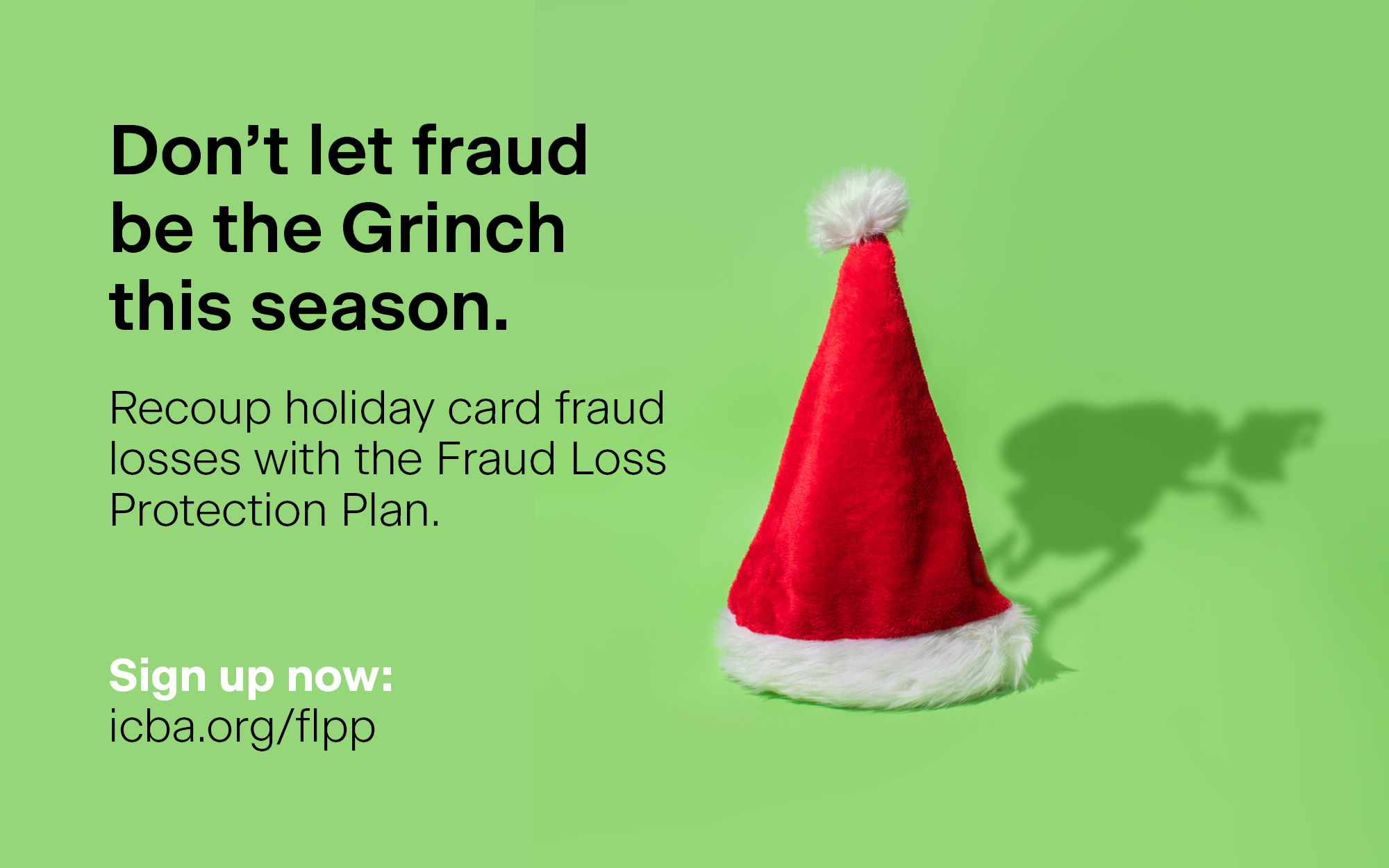Open banking is a buzzword in the banking industry, but what exactly does it mean, and how will it affect you? From application programming interfaces to fintech partnerships, it’s been applied to a wide variety of new banking technologies and paradigm shifts. Here’s what community banks need to know about open banking.
What is open banking and what does it mean for you?
October 01, 2021 / By Colleen Morrison
Open banking is a buzzword in the banking industry, but what exactly does it mean, and how will it affect you? From application programming interfaces to fintech partnerships, it’s been applied to a wide variety of new banking technologies and paradigm shifts. Here’s what community banks need to know about open banking.
Open banking. These two words can ignite a mix of reactions from community bankers, ranging from excitement to disinterest, and the response varies greatly depending on the vantage point.
More community banks are embracing open banking
30%
of community banks have deployed APIs in 2021, up from only 21% just a year ago
Another 50%
report that they are either planning to invest or implement APIs this year or have discussed implementation at the board level
1/5
report that APIs are not currently on their radar
Source: Cornerstone Advisors What’s Going on In Banking 2021 report
“The term open banking is somewhat in the eye of the beholder,” says Charles Potts, ICBA senior vice president and chief innovation officer. “While there has been an attempt by a lot of industry pundits, analysts and vendors to define what it means, that, by its very nature, has created confusion.”
It’s no wonder the industry lacks clarity on this issue. It’s namechecked in everything from the European Union’s Payment Services Directive (PSD2) to the practice of screen scraping—culling screen display data from community bank applications to display in a third-party environment. It’s even dominating nomenclature around banking-as-a-service (BaaS) developments.
“Some [banking executives] just think open banking is a European thing,” says Lee Wetherington, senior director of strategy at solutions provider Jack Henry & Associates, Inc. in Monett, Mo. “Then, if you just go by the headlines, all you’re going to read about, by and large, are banking-as-a-service partnerships, so much so that you are most likely to equate [open banking] with banking-as-a-service.”
In short, there is no precise definition—yet [see 4 open banking terms to know sidebar below].
Mounting pressures
This confusion may have led to slower adoption and awareness of open banking in the U.S. In fact, a 2021 Jack Henry survey of community financial institution CEOs showed that half of the executives didn’t have open banking on their radars, and another 19% reported they were simply not interested in learning about it. Yet, that survey also found that many community bankers have begun to dive deeper on this topic. Of those already in the research and planning stage, 87% plan to execute an open banking strategy by 2023.
That momentum may be increasing just in time to meet growing customer demands. According to a report from London-based Finastra, 97% of global financial institutions that have already integrated open banking into their operations say it has benefited their business lines by improving customer experience, customer acquisition and retention, or new product rollouts.
“Open banking is already here, and the expectation of the end consumer is to consume more capabilities,” says Shuki Licht, chief innovation officer at Finastra. “Ninety-five percent of the innovation happens outside of the bank. If the bank wants to have analytics capability, AI [artificial intelligence] capability, personal financial management capability and hundreds of different capabilities, it must open its cores using open banking and let fintechs collaborate.”
The roots of open banking
This concept of openness harks back to early developments in the tech industry, namely the onset of computers, according to Potts. When computer technology first entered the market, large mainframe systems were housed in temperature-controlled rooms with strict protocols for who could access them—just as core systems have been gated for community banks over the years. Then, once the technology caught up in the market and brought with it greater access opportunities, new middleware solutions launched to expand its reach to the end consumer. Today, community banks are experiencing the open banking version of this middleware technology evolution through open application programming interfaces (APIs).
“Fundamentally, these are evolutions of tools that have been around in some form or fashion since the beginning of computers,” Potts says. “How is an open API for a [software-as-a-service] SaaS-based product any different than a middleware tool we built decades ago? While technically it may be, functionally it’s not. We’re giving the customers a different way to assess and access the information and transform it.”
But given that community banks don’t often build their own core and operational systems, moving into this new open banking and open API paradigm requires engagement from third-party providers, many of which have begun offering new inroads to support greater access.
“The best way to secure the future of community financial institutions is to ensure that they have the technical agility to execute against strategic agility, which is to say they can partner, connect or integrate at will with any vendor, provider, third party or fintech of choice without ultimately having to have that gated or controlled or in any way slowed by a provider,” Wetherington says.
Market drivers
All these shifts in the landscape may be causing community bankers to ask, “Why now?” With significant movement in open banking in other geographies—94% of global financial institutions report open banking is a must-have or important to their organization, according to Finastra—outside pressures are mounting. In fact, the same study found that 72% of U.S. bankers believe shared data and infrastructure will become the norm across the industry.
Couple that activity with the growth in venture capital funding of fintech opportunities, and additional influences emerge. The second quarter of 2021 was the largest funding quarter on record, growing 30% over the previous quarter to a record $30.8 billion, according to CB Insights.
Beyond the funding paradigm, the pandemic has heightened consumer expectations of digital services. In fact, 69% of consumers expect companies to create innovative ways of accessing existing products and services, and 54% want modern types of products and services, according to a late 2020 survey from Salesforce.com.
“In the last year, with the COVID-19 situation and all of the digitization, you have more fintechs seeing opportunities for the customers of the bank,” Licht says. “With community banks, if they want to be innovative, this is the approach.”
Open banking for community banks: BaaS or embedded Fintech?
For community banks, there are two major open banking options: BaaS or embedded fintech.
In the BaaS model, the bank offers its products and solutions to a fintech or other third-party provider, and that organization then benefits from the bank’s expertise in everything from risk management and compliance to account support.
With embedded fintech, community banks leverage open APIs to bring in the right technology providers to meet customers’ needs.
In Everett, Wash., $2.1 billion-asset Coastal Community Bank provides one example of BaaS. It’s working with 24 BaaS partners and preparing to be an initial bank supporter of the Google Plex rollout.
“We use the word evolutionary, not revolutionary,” says Eric Sprink, the community bank’s president and CEO. “We’re evolving [banking] to make sure it’s more open to more people and to what’s happening in society. As society evolves, banking needs to evolve with it.”
For Coastal Community Bank, introducing BaaS into its portfolio has paid off. The community bank has grown accounts over the past year at a 1,200% growth rate and receives more fintech requests than it can manage—a lot more. Sprink says it has less than a 2% onboarding rate, with more than 1,100 fintechs that were interviewed by the bank. That signals just how high market demand is, he adds.
Despite the success of these efforts, Sprink says this path has not been a simple one. In fact, this business model means the bank meets formally with its regulator every 30 days and informally every week.
Sprink likens the risk around BaaS to the spectrum of lending. Cash-secured lending offers a low-risk opportunity to get into the space, just as engaging with new regulatory fintech, or regtech, solutions can be a simple way to enter the open banking waters. From there, bankers can explore more complex options, moving up the risk scale to something like BaaS, just as they would take those intermittent steps in moving from cash-secured lending to an offering like franchise lending.
“Banking-as-a-service, or partner banking, is an extreme [of open banking],” Sprink says. “You can start by using open APIs for better data for regtech. You can use them for customer experience, and then maybe use open banking to enter new markets.”
Embedded fintech, on the other hand, may create stronger opportunities for community banks out of the gate.
“You’ve got to be plugged into the open banking ecosystem,” Wetherington says. “But you don’t have to concentrate strategically on outbound banking-as-a-service. Community financial institutions have to get really good at the inbound embedded fintech that’s made available by way of the same open banking API infrastructure.”
The beauty of the embedded fintech strategy is you bring the best of fintech in, and you now have product feature function differentiation, but you’re backing it up by the superpower of the community bank, which is personal service at the moment of need. It’s the best of all worlds.”
—Lee Wetherington, Jack Henry & Associates, Inc.
This model of embedded fintech speaks to programs like ICBA’s ThinkTECH Accelerator, which draws in fintechs that are looking to address community bank needs.
“We call it collaborate to innovate,” Licht says. “Community banks need to leverage [open banking] and bring these solutions to the end consumer. Because the expectation of the end consumer today is totally different than what we saw two years ago.”
Embracing differentiation
The alignment of the high tech with the high touch will be the chief differentiator as community banks embrace the concept of open banking.
“This is the secret sauce for community banks,” Wetherington says. “You have to be both open and relational successfully in the new open banking ecosystem. The beauty of the embedded fintech strategy is you bring the best of fintech in, and you now have product feature function differentiation, but you’re backing it up by the superpower of the community bank, which is personal service at the moment of need. It’s the best of all worlds.”
Sprink agrees. “At the end of the day, it’s still the human beings behind the API who are deciding how to use it, and community banking is not a technology,” he says. “It’s what we do and how we do things.”
4 open banking terms to know
While differing definitions circulate within the industry, at a high level, the following sums up key activities that fall under the umbrella of open banking.
1. Open banking
While this term originated in the European Union’s Payment Services Directive (PSD2), in the U.S., open banking refers to a movement that embraces the ideas of open source, open data and transparency, creating an environment where the customer has greater access and line of sight to their data and how it is used.
2. Open application programming interfaces (APIs)
APIs allow the sharing of data between systems, and in an open environment, there is a publicly available interface that enables access to data or functionality. This environment creates the potential for community banks to share customer data (with permission) with third parties and vice versa for the development of new customer solutions. It also is the technology behind BaaS and embedded fintech.
3. Banking-as-a-Service (BaaS)
This solution offers nonbank providers access to bank functionality through APIs. It creates a way for a community bank to provide banking solutions to third-party providers who in turn, create a unique experience for customers, with the bank’s infrastructure providing financial services support.
4. Embedded fintech
Cornerstone Advisors, a Scottsdale, Ariz.-based advisory firm, defines this as, “The integration of fintech products and services into financial institutions’ product sets, websites, mobile applications, and business processes.” Simply speaking, this term speaks to a community bank applying a fintech partnership strategy to the development and implementation of its products and services.
Open banking: Where to learn more
As community banks embrace the open banking movement, how do they best identify their place on the spectrum of opportunity? Charles Potts, ICBA senior vice president and chief innovation officer, shares three steps:
Know your bank’s strengths and market and play to them
View open APIs as tools or components that can help contribute to your bank’s success
Lean on ICBA for education to have a deeper understanding of the market evolution
“We’ve built a wealth of resources and capabilities that can help you navigate this forest of buzzwords and acronyms, but it’s always got to be predicated by knowing your strengths,” Potts says. “My favorite Yogi Berra-ism is, ‘When you reach a fork in the road, take it.’ Don’t be afraid to learn, but also don’t be afraid to be very resolute in your strengths as a community bank. You proved it over and over this past year: You are good stewards of your banks and the communities you serve.”
Subscribe now
Sign up for the Independent Banker newsletter to receive twice-monthly emails about new issues and must-read content you might have missed.
Sponsored Content
Featured Webinars
Join ICBA Community
Interested in discussing this and other topics? Network with and learn from your peers with the app designed for community bankers.
Subscribe Today
Sign up for Independent Banker eNews to receive twice-monthly emails that alert you when a new issue drops and highlight must-read content you might have missed.
News Watch Today

Join the Conversation with ICBA Community
ICBA Community is an online platform led by community bankers to foster connections, collaborations, and discussions on industry news, best practices, and regulations, while promoting networking, mentorship, and member feedback to guide future initiatives.











